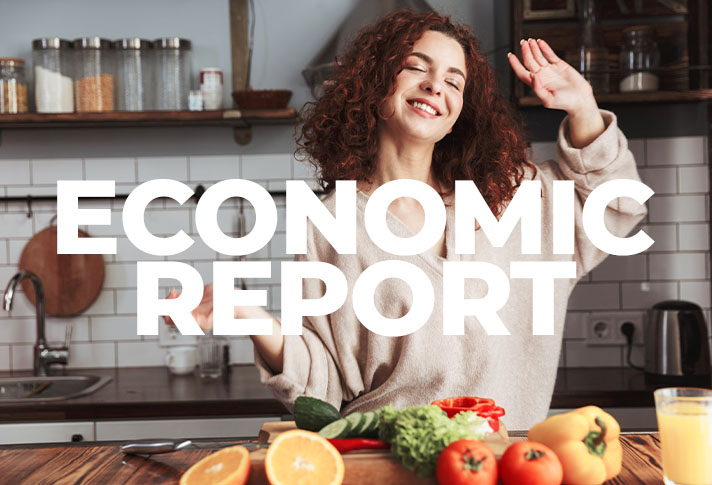Housewares industry trends to watch: Supply chain, hiring/retention, inflation, shifts in consumer behaviors, and yes, how the Omicron variant will affect everything.
ROSEMONT, IL (Jan. 14, 2022) – The numerous headwinds facing the housewares industry will remain in 2022, and uncertainty remains. But after the pandemic’s second year, many housewares executives have found a way to manage those headwinds while also putting plans in motion to not only maintain their position, but build on it.
“Unpredictability felt like the new normal in 202l, and now we’re going through another unimaginable event with the Omicron variant,” says Yvette Laugier, managing director of Peugeot Saveurs North America, LLC, and chair of the International Housewares Association’s (IHA) Board of Directors. “But our industry has become more resilient, and we’ve learned to adapt quickly. Together we can face any challenge thrown at us.”
“There’s a lot of pivoting taking place,” says Thom Nichols, president of Pretika Corporation. “It’s about not being complacent; you have to innovate. And that doesn’t just mean product development, that can mean everything from product channels to supply chain management and within your own organization.”
Paul Cosaro, CEO of Picnic Time Inc., agrees, saying their company moved from “survival mode” to looking at ways to invest in the future in 2021. “Now that we’re on such a great path, we’re asking how we can capitalize on it,” he explains.
That concept of “upping one’s game” and being even more strategic and intentional is one echoed by Joe Derochowski, vice president and home industry advisor for The NPD Group.
“Housewares buyers and sellers have been incredible. I’ve been so impressed with their ability to adjust and adapt during the pandemic,” says Derochowski. “But the reality is the door is still open for innovation both in terms of products to solve many new consumer needs, as well as new ways to engage with consumers and address evolving relationships to market, sell and deliver those products.”
Housewares Trends: Unprecedented Demand and Rising Costs
In 2021, sales of housewares and small appliances (in units) increased 5% compared to the previous pandemic highs of 2020, according to NPD’s Early Indicator Report. Comparing 2021 to the more “normal” year of 2019, unit sales increased a dramatic 24%.
NPD reports top selling categories in 2021 compared to 2019 across all segments included air fryers, toaster ovens, deep carpet cleaners, air purifiers, hair stylers, handheld massagers, cookware, portable beverageware and food storage.
While unit sales define the unprecedented demand, rising costs on numerous fronts have kept housewares sellers on their toes and eroded profit margins.
“Costs are being impacted by higher labor rates, higher material costs, exchange rate fluctuation, inventory carrying costs and the major increase in freight costs,” says Bill Endres, president of Select Brands.
Housewares companies had to absorb those costs early on, but most have now implemented new pricing on new orders. Others have adjusted product mix or promotion levels to emphasize those products with better margins.
Housewares Trends: Supply Chain Chaos
One of the most documented costs has revolved around ocean freight. Although ocean freight rates began to decrease slightly last November when peak shipping season ended, they remained “extremely elevated” at eight to nine times the pre-pandemic norm, according to the Freightos FBX Index in mid-December.
“Ocean transportation costs continue to be the largest product input concern for companies who import from outside North America,” says Steve Greenspon, CEO of Honey-Can-Do International LLC. “I think companies who have been paying spot rates will likely see some stability in 2022, while those who had contracts in 2021 will likely see a large spike. It is expected there will be capacity issues for all of 2022.”
In the middle of unprecedented demand, pandemic-related closures and other delays, ocean travel times have also remained volatile. That has caused some companies to increase inventories, if possible (adding costs and more logistics to manage,) or adjust orders to focus on higher-selling or smaller items that take up less space in a shipping container.
“2021 was just a crazy year (in supply chain management) that was hard to plan around,” says Luke Peters, president/CEO of NewAir LLC. “We continue to tweak our demand planning model to stay out in front of supply issues.”
“A bright spot for us has been how solutions-oriented our vendors and buyers have been and how we’ve found new and creative ways (such as switching ports, going direct import) to ensure product flows to where it is needed,” says Kris Malkoski, business unit CEO, food at Newell Brands.
And while much of the attention has been focused on companies importing products from abroad, U.S. companies with domestic production have also been affected by these housewares industry trends.
“We’re experiencing delays on supplies and raw materials needed to support our domestic manufacturing, as well as equipment and materials to support our expansion and construction projects,” says Mike Otterman, president/CEO of Lodge Cast Iron.
Housewares Trends The People Side: Labor and Consumer Behavior
Labor shortages in the U.S. and around the world have affected countless companies in the pandemic era, and the housewares industry is no exception. Hiring new employees and keeping existing ones is expected to remain a challenge in manufacturing, warehouses and office jobs into 2022.
Several housewares industry executives say they’re planning to invest even more in their company culture and team, and help employees navigate physical and mental health concerns, as well as work-life balance.
“We’re definitely investing in our people,” says Picnic Time’s Cosaro. “To me, that’s what’s gotten us through this.”
The big question is how consumer lifestyles and behaviors (and spending on housewares products) will change as the world opens up more. According to NPD’s Future of Home Forecast, unit sales of housewares and small appliances will decrease 5% in 2022 compared to 2021, but remain 14% over pre-pandemic levels of 2019.
“Many new needs will develop in 2022 as consumers adjust how they spend their time,” says Derochowski. “Whether returning to the office, entertaining more or many other changes in how we spend our time, consumers will be craving new solutions and creating a whole new set of needs for the industry to address.”
Most housewares executives acknowledge consumer spending may include more out-of-home experiences in 2022, but remain optimistic they can take advantage of gains made in the last few years.
“Our social media and PR efforts have been helpful in driving consumers to our brand and to our retailers,” says Laugier of Peugeot Saveurs North America. “It’s been a shift for us, but fun to communicate more directly with the end consumer.”
“We believe home and hybrid working is here to stay in some form, so people will continue to spend significantly more time in the home than (pre-pandemic),” notes Honey-Can-Do’s Greenspon, who said he is looking forward to introducing several new products this year.
“People have realized their home is their sanctuary. Even when you go out, or you go on vacation, your home is your safe haven you go back to,” adds Picnic Time’s Cosaro. “In 2022, we’ll be focused on building our brand with innovative new products…things people will love and truly can rely on.”
These housewares industry leaders will gather with thousands of other home + professionals from around the globe as the industry reconnects around innovation and inspiration at The Inspired Home Show 2022, IHA’s Global Home + Housewares Market, March 5-8 at Chicago’s McCormick Place Complex. Show badge registration is available at TheInspiredHomeShow.com. Information on what precautions are being taken to ensure the health and safety of the industry is available on our Covid Readiness webpage.
Related Articles
The International Housewares Association is the 83-year-old voice of the housewares industry. The not-for-profit, full-service association sponsors the world’s premier exposition of products for the home, The Inspired Home Show, IHA’s Global Home + Housewares Market (TheInspiredHomeShow.com), and offers its 1,400 member companies a wide range of services, including industry and government advocacy, export assistance, industry and consumer trends through the IHA Market Watch Report, executive management peer groups, a B2B community at Housewares.org, group buying discounts on business solutions services, direct-to-consumer engagement through TheInspiredHome.com and an independent news and information platform through HomePageNews.com.

